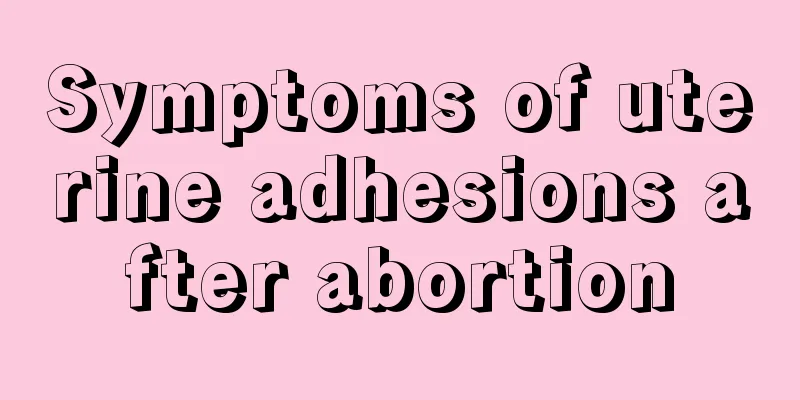Symptoms of uterine adhesions after abortion

|
Abortion is a relatively common surgery, but it is not that simple. After the abortion, it will cause damage to the uterus. This damage may be the first time or many times. Therefore, abortion is like giving birth to a child. The body may experience many symptoms. Patients should also know how to prevent uterine adhesions after abortion. If these symptoms occur, they should be highly vigilant. symptom 1. Lower abdominal pain: If the patient's condition continues to worsen, abdominal pain will occur. Some may even suffer from sleepless nights, which will have a great impact on women's life and work. Generally, about one month after an artificial abortion or curettage, sudden spasmodic pain in the lower abdomen occurs. Some patients have severe abdominal pain, restlessness, difficulty moving, and even passing gas and defecation are painful. 2. Menstrual abnormalities: Those with complete cervical adhesion may experience amenorrhea. Those with partial cervical adhesion or partial destruction of the endometrium may experience scanty menstruation but normal menstrual cycles. If it is caused by cervicitis or other inflammation, it will lead to amenorrhea in patients. Some patients will experience abnormal phenomena such as irregular menstruation, prolonged menstruation, dark menstrual blood, etc. 3. Pregnancy abnormalities: Patients are prone to pregnancy failure, including early and mid-pregnancy miscarriage, premature birth, ectopic pregnancy, missed miscarriage, intrauterine fetal death, etc. Infertility is the main symptom of this disease, which often leads to blockage of women's fallopian tubes, resulting in the inability of the fertilized egg to implant normally, ultimately leading to infertility. examine 1. When exploring the uterine cavity, the patient feels that it is narrow or cannot be explored. 2. Uterine iodized oil contrast examination shows that the uterine cavity is only partially filled or not filled at all. measure 1. Use a cervical dilator or probe to separate adhesions. 2. Separate adhesions under direct hysteroscopy. 3. After separation of adhesions, an IUD is placed in the uterine cavity for 3 to 6 months to prevent adhesions from occurring again. 4. Artificial cycle treatment can be given after surgery for 2-3 cycles. |
<<: Symptoms of female sex hormone disorders
>>: What are the symptoms of female yin deficiency?
Recommend
How to keep your vagina moist
The vagina is a very important tissue for women, ...
What does an ovarian cyst without echo mean?
Ovarian cyst without echo is a very common diseas...
It will take a few days for the milk to subside.
Generally, breast engorgement will occur when wea...
Swollen hands and feet in late pregnancy means it's a girl?
Many friends are very concerned about whether the...
I haven't had my period for almost three months.
Women's menstruation is the main way for the ...
The woman kept coughing and coughing up blood. The culprit was this... You may also have it at home
Reporter recently According to the Third Affiliat...
Follicle growth rate near ovulation
The ovarian follicle is something that women who ...
What causes nipple pain during pregnancy
Nipple pain is also common in the second trimeste...
What are the methods of female vaginal care?
Female vaginal care methods are very helpful for ...
Can diarrhea help you lose weight?
Can diarrhea help you lose weight? Nowadays, many...
What is the risk of ectopic pregnancy?
Nowadays, ectopic pregnancy is becoming more and ...
How to remedy sexual intercourse during menstruation
We know that sexual intercourse is strictly prohi...
Which part of the sheep is the sheep scorpion? Why is the sheep scorpion called the sheep scorpion?
Winter is the coldest season of the year. Many pe...
How many times a month does a girl's period come?
How many times a month does a girl have her perio...
Will the cervix open if the contractions are irregular?
Irregular uterine contractions are a very common ...









